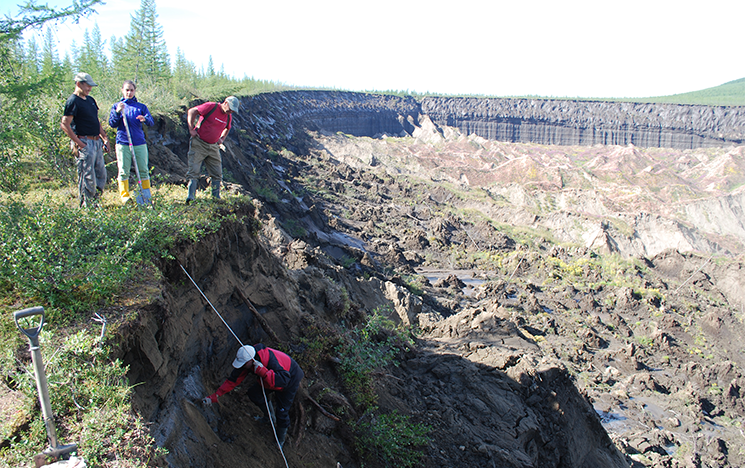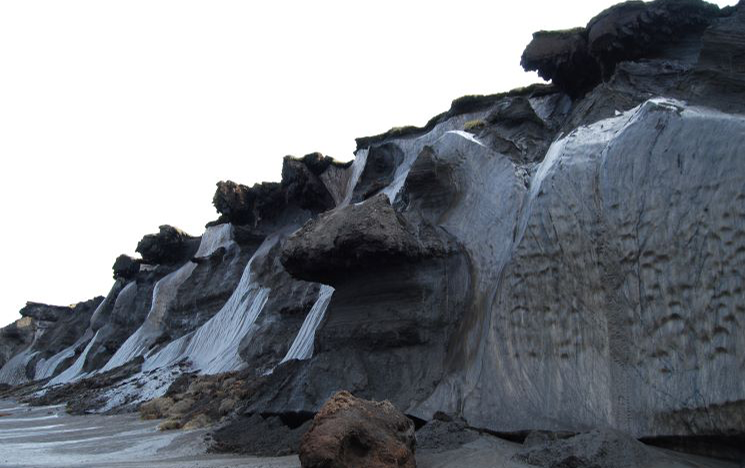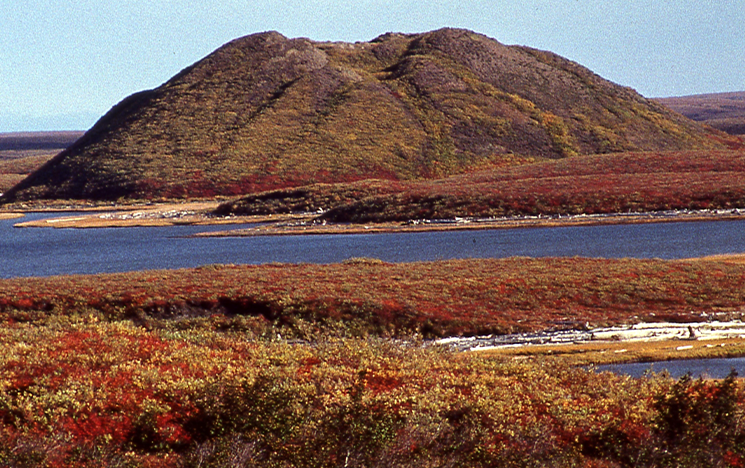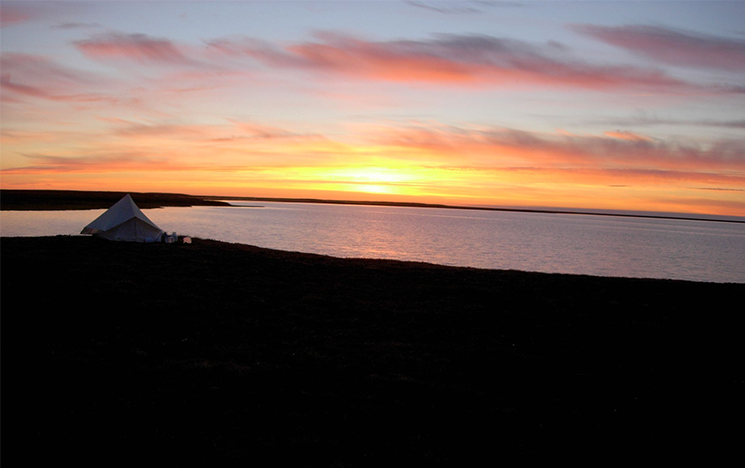Fieldwork
Read about our work in permafrost regions such as Siberia and Arctic Canada.

Our researchers inspect the Batagay megaslump in Northeast Siberia, the biggest permafrost crater in the world

Muostakh Island in Northeast Siberia, where we have done fieldwork

Ibyuk Pingo in Canada, another of our fieldwork sites

The Tuktoyaktuk Peninsula in Arctic Canada
What we do and where we work
Our research in the field focuses on understanding permafrost as a driver and record of past and modern climate and environmental change. We combine stratigraphical, sedimentological and geochemical methods.
We carry out fieldwork on present day permafrost regions in northern Siberia and western Arctic Canada, as well as on past permafrost in Europe.
Ground ice is a fundamental factor in permafrost and periglacial regions, influencing material properties, landscapes, ecosystems and carbon cycling.
Thaw of ice-rich permafrost (thermokarst) in Arctic and Subarctic lowlands is today a major process of landform and landscape evolution, and triggers ecological changes and biogeochemical disturbances in a warming world.
The methods we use
When conducting fieldwork, we use Geographic Information System (GIS) methods to analyse remote sensing imagery of permafrost terrain and produce morphometric and geomorphological maps.
These maps provide a basis for describing the landscape and interpreting the landscape evolution through the Pleistocene and Holocene epochs.
We are applying these methods to the Yana–Indigirka Lowland in Siberia, for instance, a region with an unusual combination of oriented lakes and streamlined ridges.
Contact
Email Professor Julian Murton at j.b.murton@sussex.ac.uk with enquiries about research collaboration.



